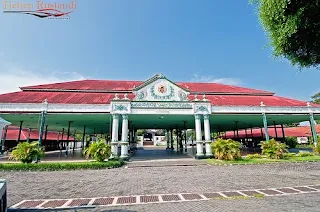Exploring the Charm of Taman Sari: Exciting Activities in Yogyakarta's Historical Oasis
Yogyakarta, a city rich in culture and history, offers a plethora of captivating tourist destinations. One not to be missed is Taman Sari, a former royal garden of the Yogyakarta Sultanate that holds many stories and beauties. Located not far from the Yogyakarta Palace, Taman Sari is the perfect place to experience the charm of the past while enjoying its beautiful architecture and tranquil atmosphere.
A Brief History of Taman Sari
Taman Sari was built in the mid-18th century by Sultan Hamengkubuwono I as a royal garden and recreation area for the royal family. Besides that, Taman Sari also served as a fortress and meditation place. The complex consists of several areas, including bathing pools, gardens, an artificial lake, and underground passages connecting various buildings within it.
Exciting Activities at Taman Sari
1. Exploring the Bathing Pools
One of the main attractions of Taman Sari is its beautiful bathing pools. These pools consist of three sections: Umbul Binangun (the main pool), Umbul Kawitan (the children's pool), and Umbul Panguras (the washing pool). The clear water and grand architecture make this place highly photogenic. Many visitors spend time taking photos around the pools or just sitting and enjoying the atmosphere.
2. Visiting Sumur Gumuling
Sumur Gumuling is a unique underground mosque accessible only through underground tunnels. This circular building has fascinating acoustics, allowing the imam's voice to be heard clearly from all corners. This place is often used as a photo spot because of its unique shape and mysterious atmosphere.
3. Viewing from the Panggung Tower
In the center of the Taman Sari complex, there is a tower called Panggung Tower. From here, visitors can enjoy the view of the Taman Sari and parts of Yogyakarta City. This tower was once used by the royal family to oversee activities around the garden.
4. Walking through the Underground Tunnels
Taman Sari has a network of underground tunnels connecting various buildings within the complex. Walking through these tunnels provides a different experience, as visitors can feel the strong atmosphere of the past. The tunnels also offer natural coolness from the heat of Yogyakarta city.
5. Enjoying Art and Culture in Kampung Taman
Around Taman Sari, there is Kampung Taman, a residential area filled with artists and craftsmen. Here, visitors can see various handmade crafts such as batik, carvings, and paintings. Additionally, there are many food stalls and cafes offering delicious Yogyakarta specialties.
Tips for Visiting Taman Sari
- Best Time to Visit: Visit Taman Sari in the morning or late afternoon to avoid the scorching sun and enjoy a cooler atmosphere.
- Clothing: Wear comfortable clothes and suitable shoes for walking, as you will be walking a lot in this complex.
- Camera: Don’t forget to bring a camera or a fully charged smartphone, as there are many interesting spots for photos.
- Tour Guide: Consider hiring a local tour guide to gain deeper insights into the history and stories behind Taman Sari.
Conclusion
Taman Sari is not just a tourist destination but also a reflection of Yogyakarta's rich history and culture. With various exciting activities on offer, this place is suitable for anyone who wants to experience the beauty of the past and enjoy a serene atmosphere. So, if you plan to visit Yogyakarta, make sure Taman Sari is on your list!
Contact Information:
- Email: info@greattoursjogja.com
- Email: greattours01@gmail.com
- Phone: +62 81227264612
- Website: http://www.greattoursjogja.com








